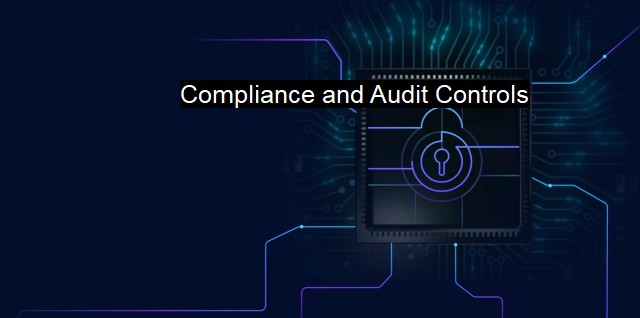What are Compliance and Audit Controls?
The Crucial Role of Compliance and Audit Controls in Cybersecurity: Protecting Sensitive Data and Regulatory Compliance in the Age of Technology
Compliance and Audit Controls are critical aspects in cybersecurity and antivirus systems. The term 'Compliance' itself refers to the measures required to ensure that an organization operates in full accordance with its defined set of rules, standards, or laws. This comprises various elements in the cyber realm, including policies, procedures, documentation, and practices. In an increasingly complex cyber landscape, compliance tends to extend to data protection and cybersecurity laws to cushion companies from devastating shocks associated with cyber threats.On the other hand, 'Audit Controls' act as checkpoints in an organization's system or data architecture. These control mechanisms systematically evaluate the efficacy of an organization's governance frameworks, risk management procedures, and the overall compliance with relevant local, national, or international regulations. audit controls help companies maintain an upper hand in spotting glaring and potential security issues while verifying whether previous audit deficiencies were addressed.
One significant aspect of compliance in terms of cybersecurity is adhering to both internally developed data management rules as well as industry-standardized regulatory compliances. These range from domestic legislation, such as the General Data Protection Regulation (GDPR) in Europe, consolidating data protection laws across the Union, identifying specific personal data, to internationally recognized compliances like the International Organization for Standardization (ISO), which provides optimal specifications for goods, basically covering IT security techniques. Other reputable end-to-end encryption standards include the PCI-DSS applied to credit card information. Compliance with such regulations ensures an organization preserves the confidentiality, culture of integrity, availability, and copyright laws while fostering customer trust in handling their sensitive data assiduously.
Creating a comprehensive security network requires traversal beyond compliance—a thorough audit. Audit controls augment to organizational resilience by facilitating the regular examination of procedures and systems handling parameters such as access controls, data encryption, network security controls, and malware protection. Implementing robust audit controls hinges on well-documented audit procedures, scheduled system checks, user accountability for sensitive changes, increased visibility across applications. This increases anticipation level, quick response to vulnerabilities, illegal entry detection abnormalities or intrusion attempts within the systems, thus maximizing potential resolution for such instances.
Audit trails play a central role in ensuring that irreversible harm to core business operations is quelled. Businesses actively involved in processing substantial volumes of sensitive personal and financial information particularly find it beneficial. As such, having an appropriate 'audit trail mechanism' checks on alterations made in the data system's digital records—preferably real-time. The generated reports often come in handy during the conduct of internal audits or investigations.
Compliance and audit controls both ensure cybersecurity hygiene. Given cyber evolution—the permeating insecurity crises require cybersecurity managers to take a multilayered and dynamic strategy in its implementation. This further emphasizes collaborative efforts through the integration of security measures at every stage in the system life cycle. Also, businesses must be aware of the frequently changing legislative environment, with regular system updates essential in adhering to abrupt changes, avoiding jeopardizing customer trust and resulting penalties.
Compliance and Audit Controls are pivotal tools strengthening an organization's system against cybersecurity

Compliance and Audit Controls FAQs
What are compliance controls in cybersecurity?
Compliance controls in cybersecurity are the measures that organizations put in place to ensure they comply with laws, regulations, and industry standards related to information security. These controls include policies, procedures, and technologies that aim to mitigate risks and protect sensitive data from unauthorized access or disclosure.Why are audit controls important in antivirus software?
Audit controls are essential in antivirus software because they help organizations ensure that the software is working correctly and providing sufficient protection against malware and other cybersecurity threats. Audit controls help verify that the antivirus software is up-to-date, configured properly, and detecting and blocking malicious activity.What is the difference between preventive and detective controls in cybersecurity?
Preventive controls aim to stop or reduce the likelihood of a cybersecurity incident, while detective controls are designed to detect incidents that have already occurred. Examples of preventive controls include firewalls, access controls, and encryption, while detective controls include intrusion detection systems, security information, and event management systems.How can organizations ensure compliance and audit controls are effective?
Organizations can ensure the effectiveness of compliance and audit controls by regularly assessing and testing them. This includes conducting internal audits and vulnerability assessments, as well as third-party audits and penetration testing. Organizations should also have a process for tracking and reporting security incidents and regularly reviewing and updating their security policies and procedures.| | A | | | B | | | C | | | D | | | E | | | F | | | G | | | H | | | I | | | J | | | K | | | L | | | M | |
| | N | | | O | | | P | | | Q | | | R | | | S | | | T | | | U | | | V | | | W | | | X | | | Y | | | Z | |
| | 1 | | | 2 | | | 3 | | | 4 | | | 7 | | | 8 | | |||||||